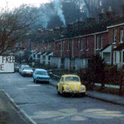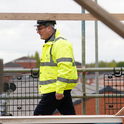The housing market is in disarray, but there are simple things the government could be doing to fix it.
The outlook for far too many in England is bleak; the council houses that once formed the bedrock of communities are now unobtainable, house prices are so high that an average worker would need eight times their earnings to afford a home of their own—and the number of families becoming homeless has increased year on year for the past seven years.
All these things are a result of a housing crisis that could have been prevented; a failure to build enough genuinely affordable homes, coupled with the sale of council house stock, has meant that the only option for many is to enter a private rented sector that lacks the security needed to start a family and turn a house into a home.
The need to build far more houses is understood across the political spectrum, but what can end up lost in building targets is the need for genuine affordability.
Unfortunately, as a recent report commissioned by Shelter outlined, the rules around affordable housing, covering social housing and low cost renting and ownership, are not fit for purpose. Under current definitions an “affordable” starter home could set you back as much as £450,000 in London and £250,000 outside, far beyond the reach of most families, and the newly defined “affordable rent” works out at 30 per cent more expensive for a two-bedroom property in comparison to traditional social rents.
Loose planning regulations allow developers to avoid building affordable houses. This means that only 6,000 social rented homes a year are being built at a time when over one million are desperately waiting for social housing.
We need to be bolder. Affordable housing should never be out of reach of local workers, so our judgment of affordability should be linked to local wages, with rent or mortgage costs no more than a third of local average incomes.
Of course we do need to build more. The Shelter report showed that 50,000 affordable homes a year is not enough to solve the housing crisis. We need one million genuinely affordable homes over 10 years. Building them will take time, investment and a shift in how we see the housing market.
However, there are a few steps the government can take now. For starters, it should help those relying on rental accommodation feel more secure. Many people have been pushed into renting not out of choice but by the unaffordability of ownership and the unavailability of social housing: parents with children now make up over one third of the private rented sector; six in ten of those parents only rent because they cannot afford to buy.
These families need the peace of mind that their accommodation is secure and that they won’t be forced to take their children away from schools and communities. The current system leaves much to be desired.
Rather than the security seen in countries like Germany, tenants in England can be told to leave with just two months’ notice with no explanation as to why. This isn’t acceptable, and it is a damming indictment that the loss of a private tenancy is now the leading cause of homelessness in England. Tenants need more security, with limits on how much their rents can rise, to make the market secure.
It is also counterproductive that the government is still allowing the sell-off of thousands of social homes a year at knock-down prices through Right to Buy.
Right to Buy worked for those who secured the dream of home ownership in the 1980s, but when so many are on social housing waiting lists we cannot afford to continue haemorrhaging our stock. That’s why we must put a moratorium on Right to Buy while we get our social housing stock up to scratch. Maybe then we can begin to solve this crisis once and for all.

Rex/Shutterstock
Unsafe as houses
What can end up lost in building targets is the need for genuine affordability
January 28, 2019












